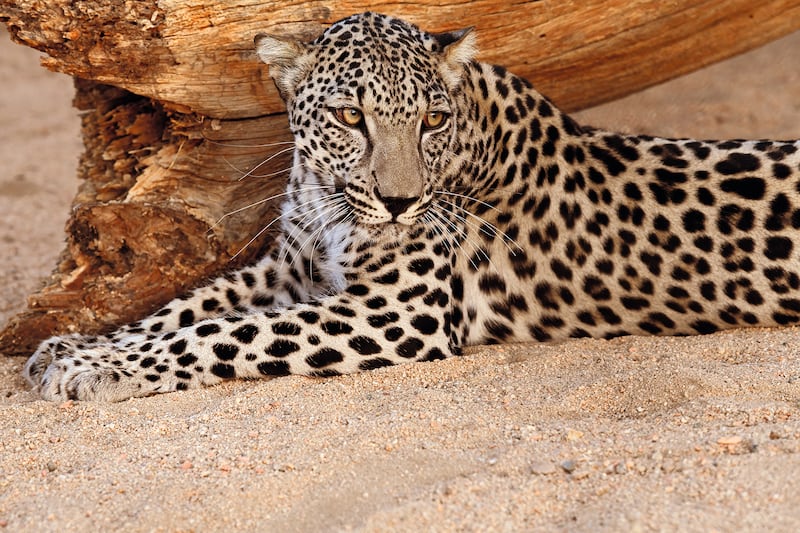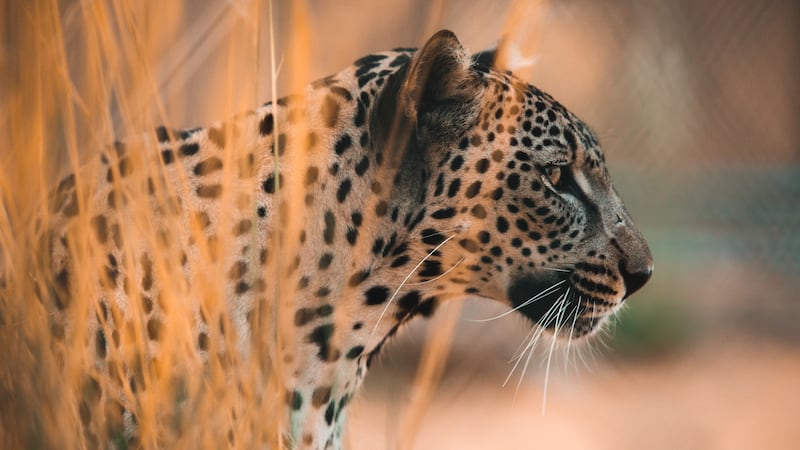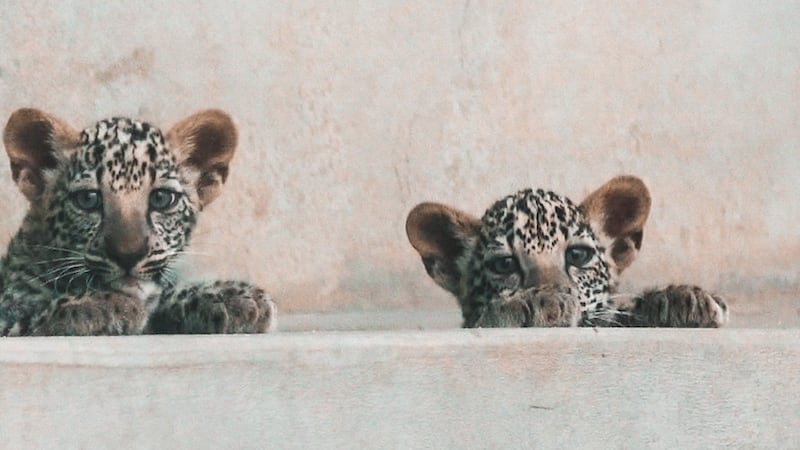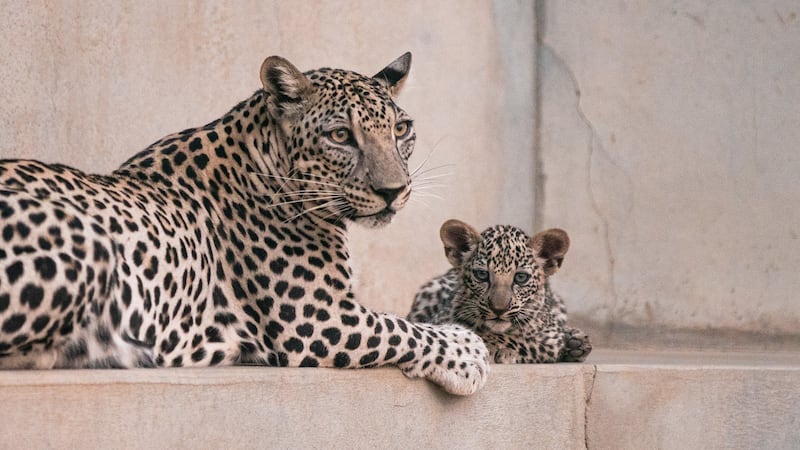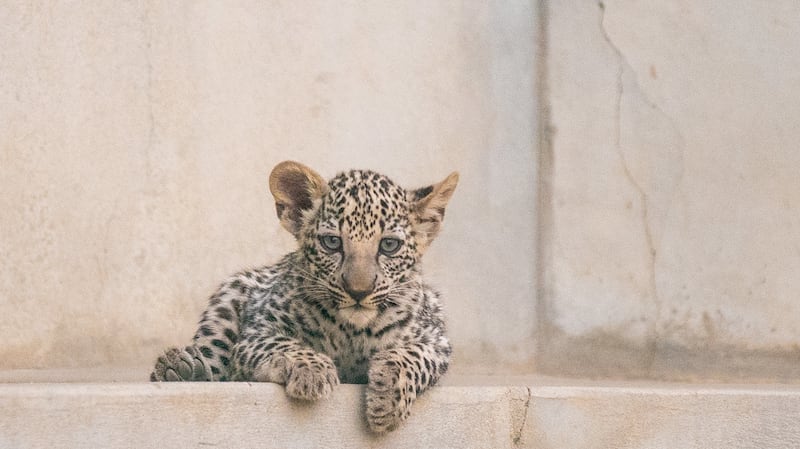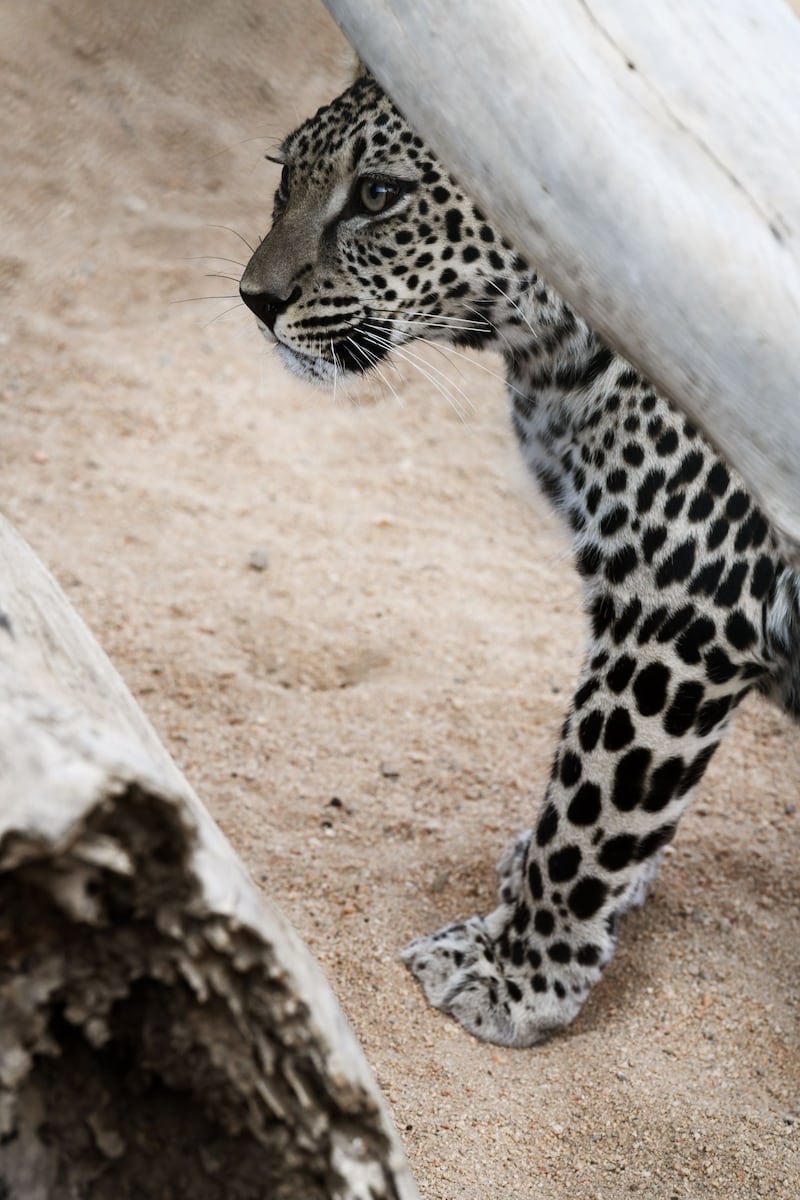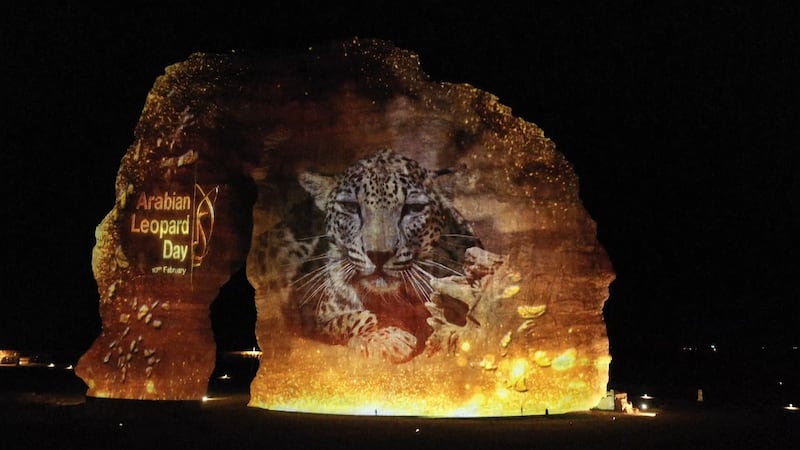A groundbreaking genetic analysis of the critically endangered Arabian leopard has shown that the big cat is closely related to its Asian cousins than its African counterparts.
The research has yielded useful information to breeding programmes that are under way.
It is the first time that researchers have fully sequenced the complete set of genetic material, known as the genome, of Arabian leopards.
Known scientifically as Panthera pardus nimr, the Arabian leopard is classed as critically endangered by the International Union for Conservation of Nature, although several countries, including the UAE, are making efforts through captive breeding to increase numbers.
The two individuals' genetic sequences were generated in Saudi Arabia from blood samples before the information was analysed by researchers in countries, including Spain.
The genetic data indicates that there has been a “prolonged” decline in the size of the population of the Arabian leopard, which has caused the loss of much genetic diversity.
There are thought to be fewer than 200 Arabian leopards left in the wild in Oman and Yemen, with possibly some still roaming free in Saudi Arabia.
The Arabian leopard is typically smaller than its cousins in Africa and has a striking appearance with a light-coloured coat.
In suggesting that the Arabian leopard is more similar to the Asian leopard, than to leopards in Africa, the analysis indicates that there was a single dispersal event of leopards out of Africa, possibly echoing how modern humans migrated from the continents.
The genetic study, published in the Cell Press journal, could be the beginning of wider efforts to sequence the genetic material of Arabian leopards.
“If you're managing a breeding centre, you should have the genetic profile of each individual you have on your breeding programme,” said Prof Salvador Carranza, one of the senior authors of the study and director of the Institute of Evolutionary Biology at Pompeu Fabra University in Barcelona.
Rare Arabian leopard cubs born in AlUla
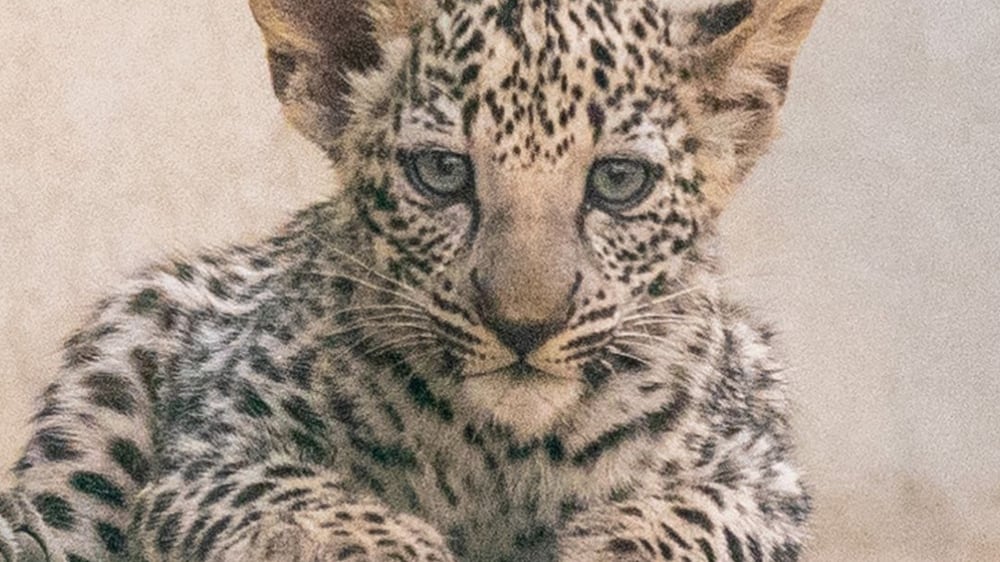
Gabriel Mochales-Riano, a doctoral student in Prof Carranza's laboratory and the paper's first author, said that without carrying out genetic analysis, breeding programmes could cross individuals that were very similar to one another.
“You could be sending a leopard from Saudi Arabia to the UAE. You think, because they’re coming from other places, they’re not related, but they could be related,” he said.
When breeding in captivity, it is important to avoid having individuals that are genetically similar with one another.
This is because animals that inherit the same form of any particular gene from both parents are more likely to display traits that are harmful.
Prof Carranza said that when producing profiles, it was important to use the full set of genetic material rather than, as has often been the case in studies, looking just at what is called mitochondrial DNA.
Mitochondria are tiny “organelles” found within cells that release energy and have a small amount of their own genetic material, which is inherited only from the mother.
With the Arabian leopard, previous analysis with mitochondrial DNA indicated that the creatures were more closely related to leopards in Africa, but genomic analysis – which involves looking at orders of magnitude – shows, instead, that they are more similar to leopards in Asia.
“The previous reports were based on mitochondrial DNA. We advocate for the use of genomic data. Mitochondrial DNA has been used a lot in the past but it should not be used for conservation,” said Prof Carranza, who has also carried out extensive genetic studies on reptiles in the UAE.
While the numbers of Arabian leopards in the wild have fallen precipitously as a result of hunting, habitat loss and a lack of prey, significant efforts are in place to try to protect the subspecies' future.
Sharjah's Breeding Centre for Endangered Arabian Wildlife has a programme to increase the numbers of Arabian leopards while Saudi Arabia's Royal Commission for AlUla (RCU) has a $25 million Arabian Leopard Fund to preserve and grow populations. There are also efforts in Oman to increase numbers.
The RCU has taken over the breeding centre in Taif and, in partnership with American organisation Panthera, is working to increase numbers in captivity.
A new breeding centre will be established in AlUla, an area in north-west Saudi Arabia, where eventually the animals could be released into the wild in protected areas.
